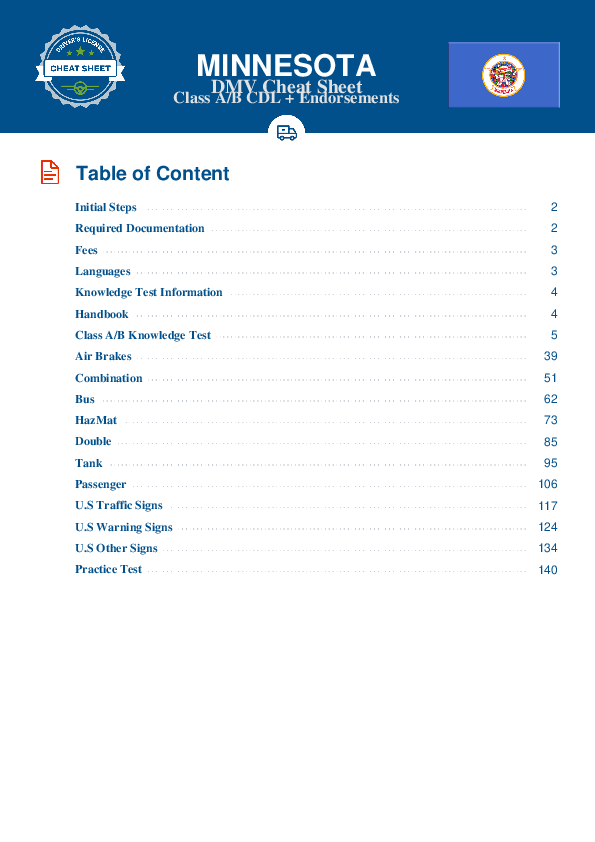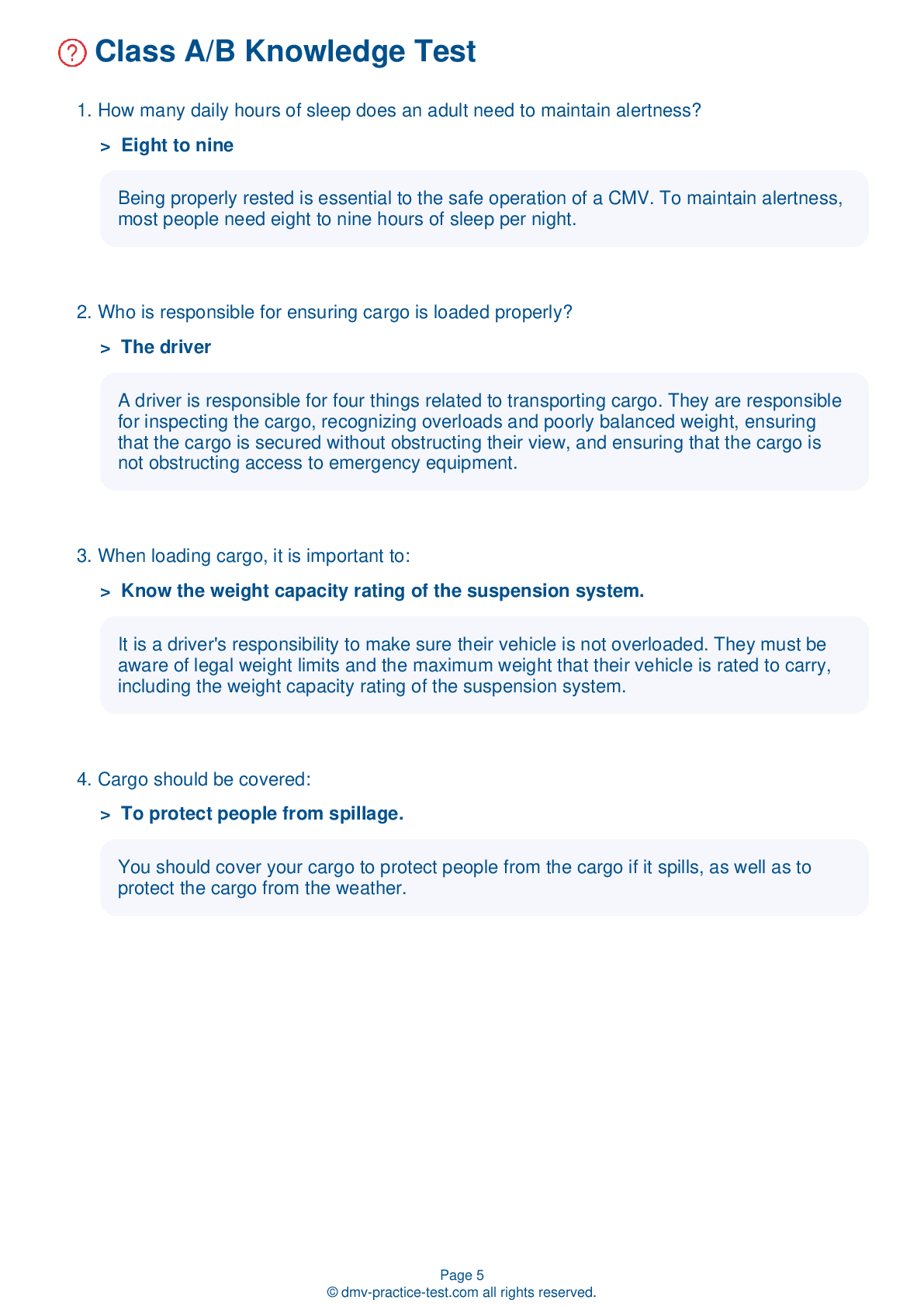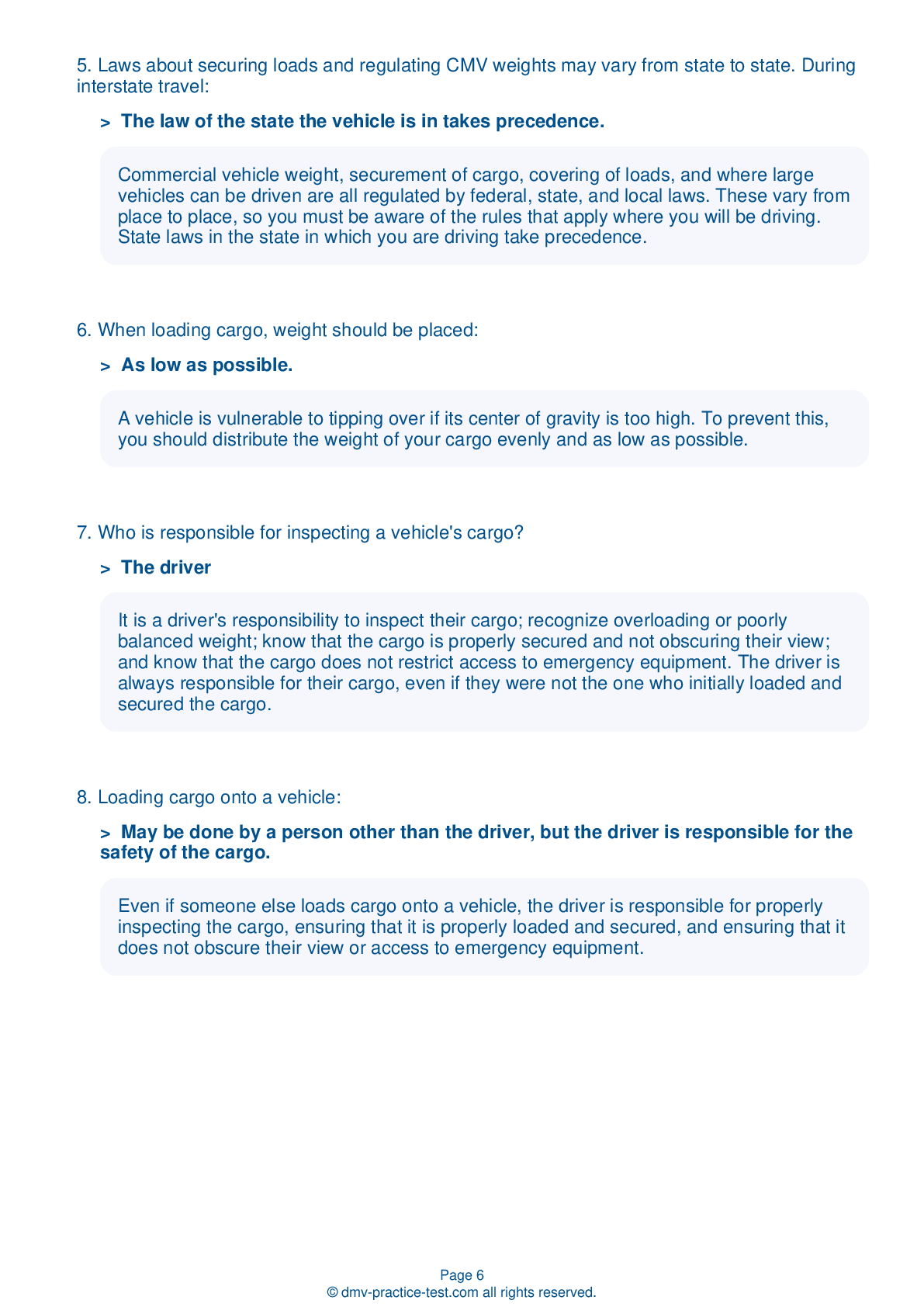Knowledge Test Class A #1
Class A Driving Test | Minnesota 2025 #1 Page 7 of 7
Train for FREE online with our Minnesota class A license test. The official exam test consists of several obligatory parts, with all of them checking your knowledge of different blocks of road rules. If you need to obtain a MN CDL class A permit in 2025, practice as much as possible. Free sample tests published on our website will help you check and improve your knowledge and boost your grades. Please bear in mind that CDL class A requirements may vary from state to state.
50
40
20
43 . If you are feeling tired and yawning a lot while you are driving, you should:
If you begin to feel tired while driving, you should stop to get some sleep. Trying to push on to reach your destination while tired is dangerous. You should not rely on caffeine to keep you awake.
44 . There is no penalty for refusing to undergo blood alcohol testing.
Minnesota has an Implied Consent Law, which means that by operating a vehicle in the state, you are understood to have consented to a chemical test if authorities ask you for one. If you refuse to submit to a test, you will be disqualified from operating a CMV for one year and your driver license will be revoked for one year.
45 . If the low pressure warning light comes on while you are driving:
You should continue driving, but turn the emergency flashers on to warn other motorists.
If the low air pressure warning light turns on, you should stop and safely park your vehicle as soon as possible. Controlled braking will be possible only as long as enough air remains in the tanks.
46 . When backing with a trailer, you should:
Not use the brakes.



